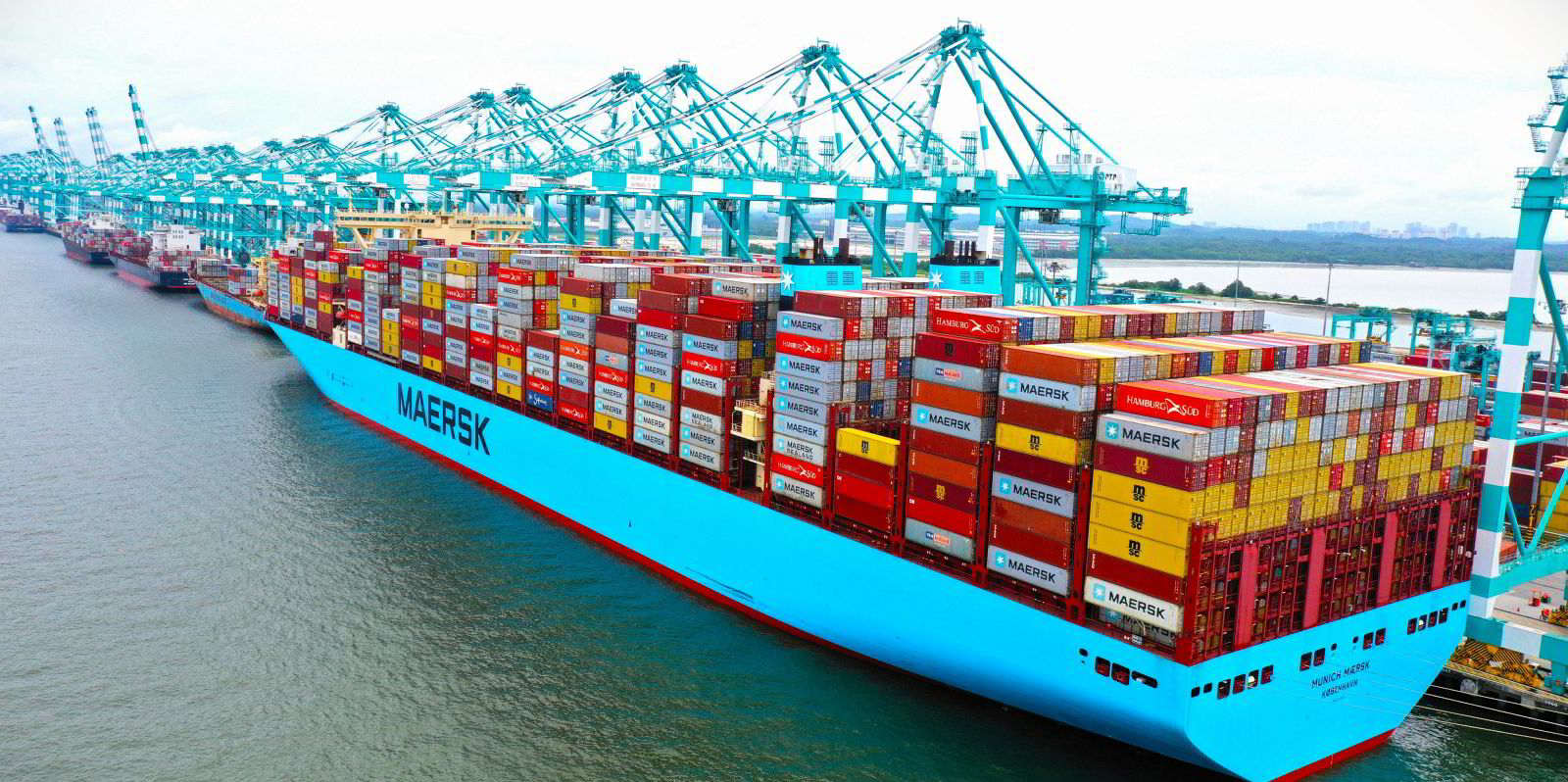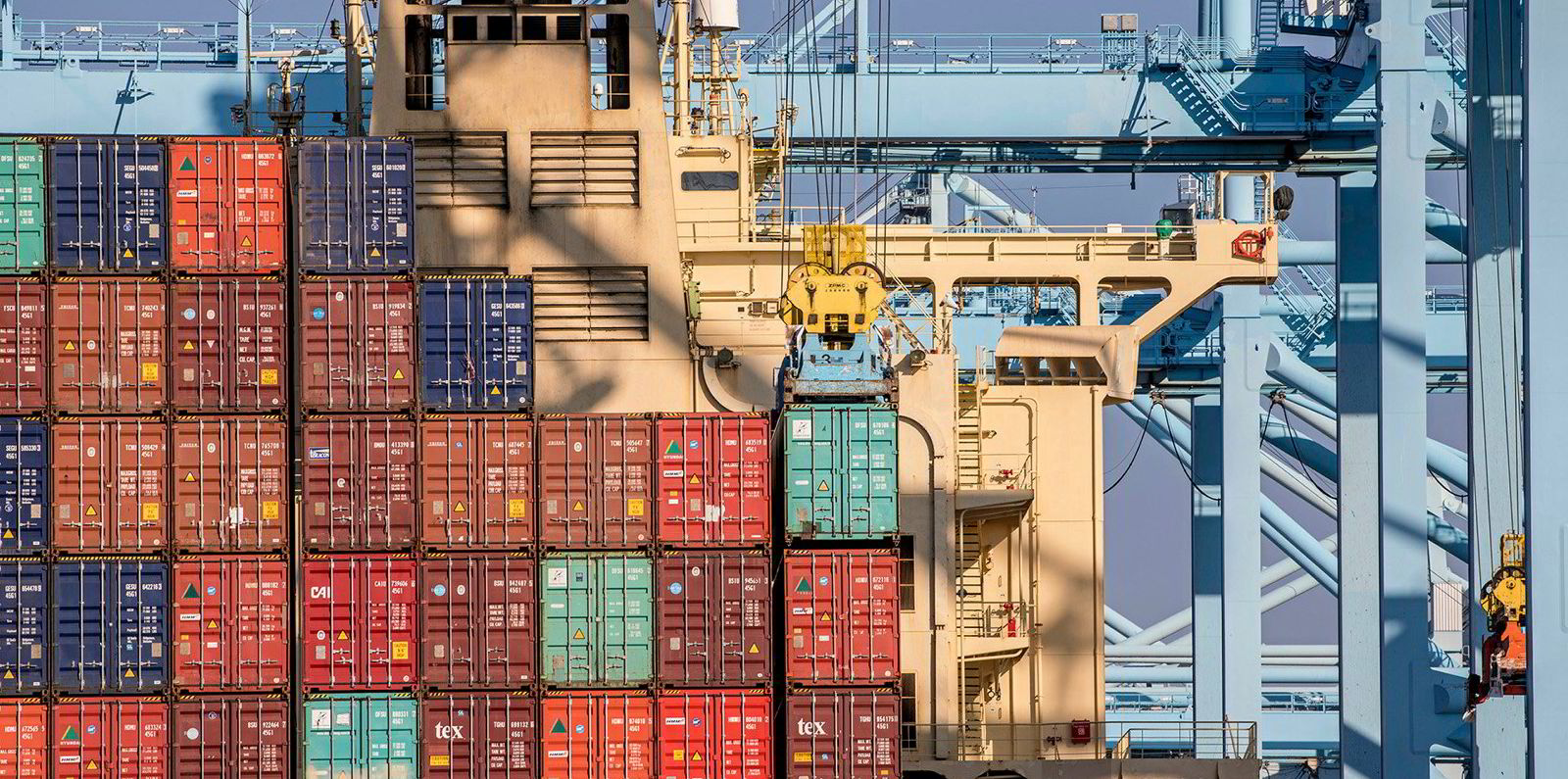Leading liners have suspended more services from Asia, but their efforts are failing to stem the steep fall in freight rates.
AP Moller-Maersk and Mediterranean Shipping Co (MSC) are poised to remove capacity from their Asia to North Europe service just days after unveiling the cancellation of two transpacific services.
The 2M Alliance partners have voided the sailing of the 16,652-teu MSC Hamburg (built 2015) from Ningbo on 26 October.
“As a consequence of the forecasted reductions in global demand, Maersk is looking to balance the network accordingly,” the Danish company said.
The suspension comes as container spot rates from Asia to North Europe trade fell to $5,229 per 40-foot-equivalent unit (feu).
That means rates have practically halved since the end of August, according to the Freightos Baltic Index estimates.
Spot rates from Asia to the US West Coast are faring even worse.
Eastbound transpacific rates were down to $2,292 per feu on 18 October — a far cry from levels close to $18,000 per feu seen a year earlier.
Pre-pandemic levels
The speedy decline has led to expectations that freight rates could be back at pre-pandemic levels by the end of the year.
Spot rates have fallen at an average of 7.5% per week since the end of July.

That puts rates on course to hit the average of 2019 by the end of 2022, according to Parash Jain, an analyst with HSBC Global Research.
But so far, the carriers have implemented ad-hoc blank sailings that have proven ineffective in stopping rate declines, according to Linerlytica.
“Carriers are still unwilling to take out capacity in any serious way,” the analyst claimed.
Global port congestion is down to a 10-month low, with both the US and China ports recording lower congestion levels.
This had “negated much of the initial capacity reductions”, Linerlytica noted.
Congestion is expected to ease further in the coming weeks as carriers adjust their capacity deployed on the transpacific.
That includes the planned shutdown by Maersk and MSC of their Sequoia/TP3 service due to what the MSC described as “significantly reduced demand for shipments into the US West Coast”.
The service was jointly operated with a fleet of up to six vessels of 11,000 teu to 14,000 teu.
The development comes alongside a pick-up in the number of new ships being delivered, which has brought the active teu fleet back above 17m teu for the first time in 12 months, Linerlytica noted.
Powerless
Some believe that carriers may be unable to remove more capacity to stem the fall in rates.
Danish analyst Sea-Intelligence suggests that further reductions in deployed capacity “will not only create significantly more supply chain problems but will also likely have the cargo owners up in arms”.
“There is a very delicate balancing act for the carriers to follow from here on.”
That means the amount of capacity blanked above this year is already higher than in 2019.
On average, over one-quarter of capacity has been cut from the transpacific and Asia-Europe trades in the four weeks prior to 30 October.
But freight rates have fallen simply because there was so much capacity added during the last year.
That suggests container rates and prices are poised to drop below pre-Covid levels, said Christian Roeloffs, chief executive of Container xChange — an online container booking platform.
“What we now see is not unforeseen,” he said. “The slowing down of demand and the glut of oversupply of containers are all a consequence of the disruptions caused since the outbreak of the pandemic.
“It is like the classic boom and bust cycle.”
The drastic drop in container freight rates is beginning to be reflected in liner earnings.
Last week, Hong Kong-based carrier Orient Overseas Container Line (OOCL) reported its first drop in revenues in two-and-a-half years.
Third-quarter earnings of Maersk and Israeli carrier Zim are likely to be relatively flat, as earnings are shielded by long-term contracts, according to Fearnley Securities.
But the Norwegian investment bank expects fourth quarter 2022 and 2023 results will be heavily impacted by market developments.






